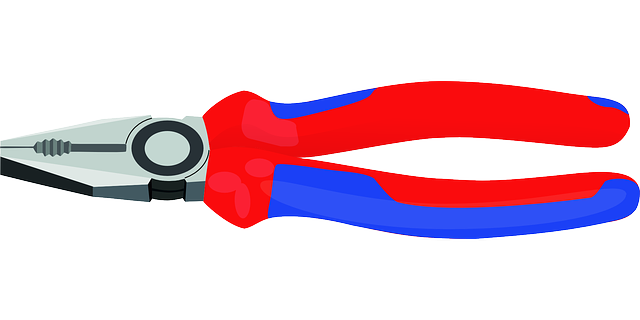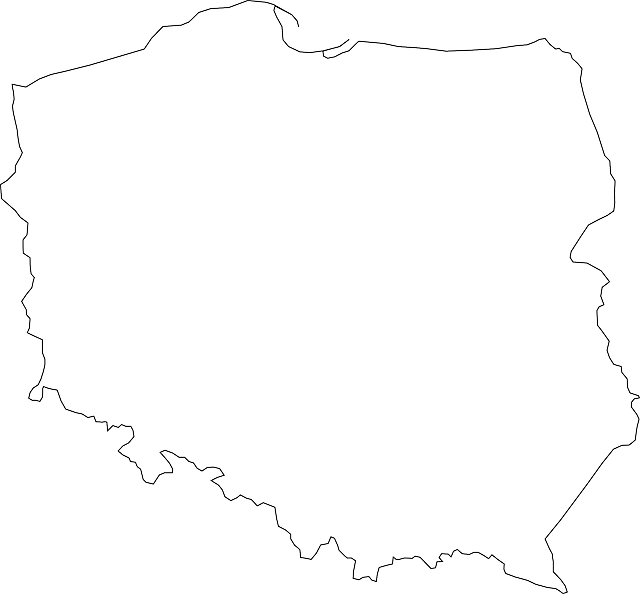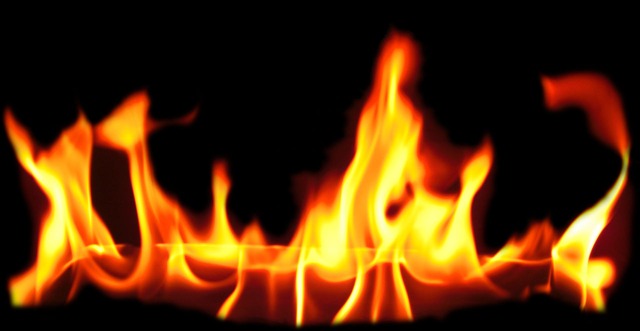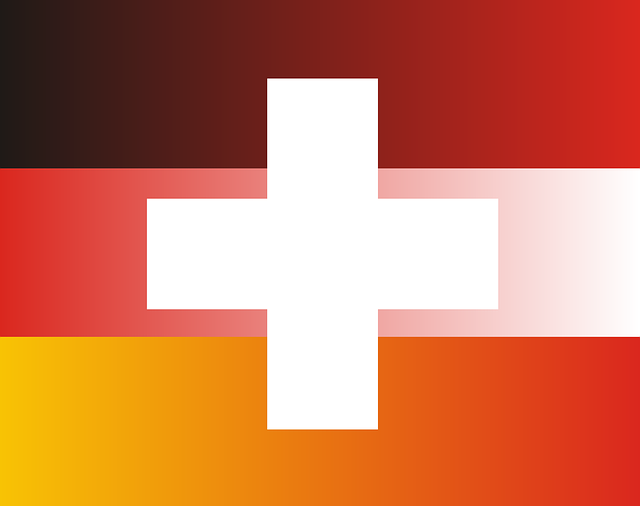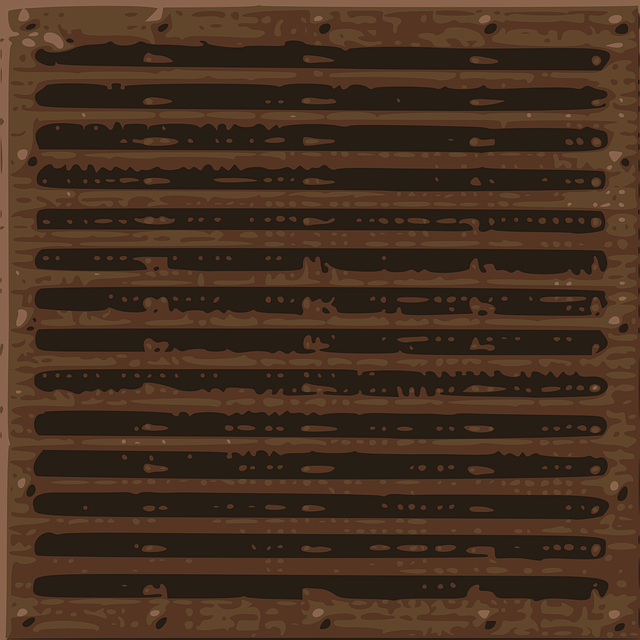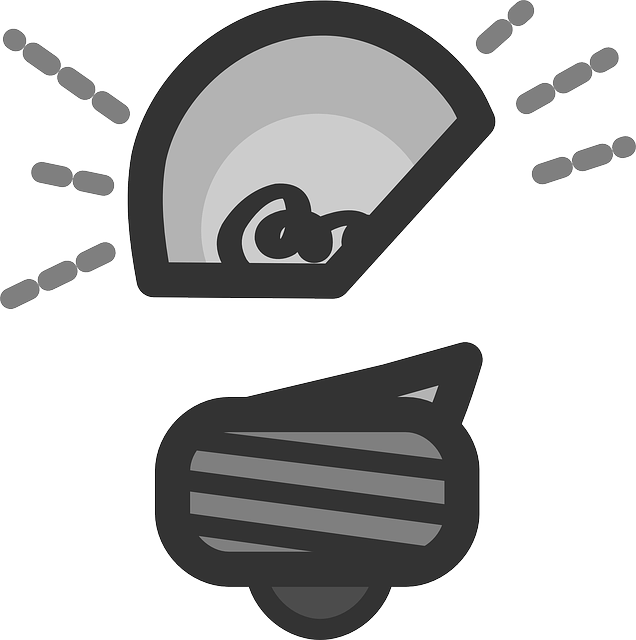حوادث المحطة النووية فوكوشيما 1
|
|
| ساهم بشكل رئيسي في تحرير هذا الموضوع |
|
صورة بالقمر الصناعي للمفاعلات الأربعة بعد انفجار جميع منهم، 16 مارس
| |
| التاريخ | 11 مارس 2011 |
|---|---|
| الوقت | 14:46 توقيت اليابان القياسي (UTC+09:00) |
| المكان | اوكوما، فوكوشيما، اليابان |
| الإحداثيات | |
| الناتج | متضارب: السلطات اليابانية نطقت أنه من المستوى أربعة (حادث عواقبه على النطاق المحلي) على المقياس الدولي للأحداث النووية، ادعت السلطات الفرنسية أنه من المستوىستة (حادث خطير) |
|
| |
حوادث المحطة النووية فوكوشيما 1، هي سلسلة مستمرة من الحوادث أدت إلى إنبعاث الإشعاعات من محطة الطاقة النووية فوكوشيما 1، اتىت بعد زلزال وتسونامي 11 مارس 2011. تتكون المحطة منستة مفاعلات ماء مغلي منفصلة. أغلقت المفاعلات تلقائيا بعد الزلزال لكن موجات التسونامي غمرت المحطة، مما استدعى لعمل مولدات الطوارئ للتبريد والتحكم في المفاعلات. انبعثت اشعاعات أخرى من محطة فوكوشيما 2 على بعد 11.5 كيلومتر جنوبا وحاول العمال السيطرة على الأمر، لكن أعرب فيما بعد أنه تم إغلاق المحطة.
ذكرت وكالة الهندسة النووية بأن الوحدات من 1 إلى ثلاثة توقفت بشكل آلي بعد زلزال اليابان الكبير، بينما كانت الوحدات من أربعة إلىستة متوقفة بسبب أعمال الصيانة. وقد تم تشغيل مولدات ديزل لتأمين طاقة كهربائية راجعة من أجل تبريد الوحدات 1 إلى ثلاثة والتي كانت قد تضررت بسبب التسونامي. وقد عملت هذه المولدات في البداية بشكل جيد لكنها توقفت بعد ساعة.. ويستخدم التبريد في طرح الحرارة المتولدة في المفاعل، وبعد فشل المولدات وتوقف البطاريات عن العمل بعدثمانية ساعات والتي تستخدم عادة للتحكم بالمفاعل وصمامته اثناء إنقطاع الكهرباء، أعربت حالة الطوارئ النووي في اليابان. وقد أوفدت القوات اليابانية البرية بطاريات إلى مسقط الحدث .
صدر أمر إخلاء أولي لنطاق ثلاثة كم من محيط المفاعل وضم ذلك على 5800 مواطن يعيشون ضمن هذا النطاق. كما نصح السكان الذين يعيشون ضمن نطاقعشرة كم من المصنع حتى يبقوا في منازلهم. وفي وقت لاحق ضم أمر الإخلاء جميع السكان ضمن نطاق الـعشرة كم.
وقد أعربت شركة كهرباء طوكيوفي منتصف ليل 11 مارس حسب التوقيت المحلي لطوكيوبأنه يفترض أن يتم تنفيس الغازات في الوحدة رقم 1 مما سيؤدي إلى تحرير إشعاعات في الجو. كما سجلت شركة طوكيوللكهرباء إرتفاع النشاط الإشعاعي في بناء توربين الوحدة 1.ref>[. وفي الساعة الثانية حسب التوقيت المحلي لطوكيووصل الضغط ضمن المفاعل إلىستة بار وهي قيمة أعلى ب 2 بار من أعلى قيمة مسموح فيها في الشروط الطبيعية . وفي الساعة 5:30 سجل الضغط ضمن الوحدة 1 ب 8.1 بار وهوأعلى بـ 2.1 مرة من الإستطاعة التصميمية . وفي الساعة 6:10 أعرب عن معضلة تبريد في الوحدة 2.
للحد من تصاعد الضغط المحتمل تم الافراج عن البخار الحواي على مواد مشعة من الدائرة الابتدائية والثانوية الحاوية له. وفي الساعة 6:40 من 12 مارس صرح كبير أمناء مجلس الوزراء الياباني يوكيوإدانوحتى كميات الإشعاعات التي حررت هي كميات صغيرة وأن اتجاه الرياح سيؤدي إلى توجيهها إلى البحر. لكن كمية الإشعاعات المقاسة ضمن غرفة التحكم في المحطة كانت أكثر بـ 100 مرة من المسموح. أما كمية الإشعاعات المقاسة قرب البوابة الرئيسية للمحطة فكانت أكثر بـثمانية مرات من الحد الطبيعي. وأعرب في مؤتمر صحفي عند الساعةسبعة ، بأن كمية الإشعاعات المقاسة من خلال سيارة مراقبة كانت أكبر من الحد الطبيعي. كما تم الكشف عن السيزيوم بالقرب من المحطة. مما يعني إحتمال تعرض قضبان الوقود إلى الهواء.
قام رئيس الوزراء الياباني ناوتوكان بزيارة المحطة لفترة قصيرة في 12 مارس.كما أوفد فريق إنقاذ تابع لمطافئ طوكيوإلى فوكوشيما وأجلي أكثر من 50000 مواطن من المنطقة .
خط زمني
- 12 مارس: بينما كانت الأدلة تتزايد على حدوث انصهار جزئي لقضبان الوقود في الوحدة 1، دمر انفجار هيدروجيني الكساء العلوي للمبني الحاوي لوحدة المفاعل 1. وقد أصاب الانفجار أربعة عمال، ولكن حاوية المفاعل داخل المبنى ظلت سليمة. The explosion is believed to be the result of a buildup of hydrogen within the building after it was vented along with steam to reduce pressure within the containment vessel. Hydrogen is formed when overheated zircaloy reactor fuel rods oxidize with water. Operators of the plant were authorised to commence using sea water for emergency cooling, which will permanently damage the reactor beyond further use.
- 13 مارس: انصهار جزئي آخر بدا محتملاً في الوحدة 3. وحتى 13:00 JST, كلا المفاعلين 1 وثلاثة كانا يجري تهويتهما واعادة ملئهما بالماء وحمض البوريك لخفض درجات الحرارة ومنع المزيد من التفاعلات النووية. Unit 2 was reported to have lower than normal water level but to be stable, although pressure inside the containment vessel was high. أعربت وكالة الطاقة الذرية اليابانية أنها تقدر الوضع في الوحدتين 1 وثلاثة عند المستوى أربعة (حادث ذوعواقب محلية) على المقياس الدولي للأحداث النووية (INES).
- 14 مارس: انفجر مبنى المفاعل الثالث injuring eleven people. There was no release of radioactive material beyond that already being vented but blast damage affected water supply to Unit 2. The president of the French nuclear safety authority, Autorité de sûreté nucléaire (ASN), said that the accident should be rated as aخمسة ( accident with wider consequences) or even aستة (serious accident) on INES.
- 15 مارس: problems with the vents on Unit 2 apparently meant that pressure in its containment vessel had prevented adding water, to the extent that Unit 2 was in the most severe condition of the three reactors. An explosion in the "pressure suppression room" caused some damage to Unit 2’s containment system. A fire broke out at Unit أربعة involving spent fuel rods from the reactor, which are normally kept in the water-filled spent fuel pool to prevent overheating. Radiation levels at the plant rose significantly but have since fallen back. A radiation equivalent dose rate was observed at one location in the vicinity of Unit ثلاثة of 400 millisievert per hour (400 mSv/h).
- 16 مارس : حوالي الساعة 14:30 في 16 مارس، أعربت تبكونفسها حتى حوض مخزن قضبان الوقود، والذي يقع خارج المنطقة الحاوية—يمكن حتىقد يكون قد بدأ بالغليان مما يزيد احتمال تعرض القضبان لوضع حرج. By midday, NHK TV was reporting white smoke rising from the Fukushima I plant, which officials suggested was likely coming from Reactor 3. Shortly afterwards, reports surfaced that all but a small group of remaining workers at the plant had been placed on standby because of the dangerously rising levels of radioactivity up to 1000 mSv/h. Later reports stated that TEPCO had temporarily suspended operations at the facility due to radiation spikes and had pulled all their employees out. A TEPCO press release stated that workers had been withdrawn at 06:00 JST because of abnormal noises coming from one of the reactor pressure suppression chambers. Late in the evening, Reuters reported that water was being poured into reactorsخمسة and 6.
- 17 مارس: في الصباح ألقت مروحيات الدفاع المدني أربع حاويات من المياه على أحواض الوقود في المفاعل ثلاثة و4. بعد الظهر أعرب حتى الوحدة أربعة عن إنغمار قضبان الوقود بالمياه ولا يوجد قضيب واحد غير مغمور. وبدأ العمل على إنشاء مصادر طاقة كهربائية خارجية لجميع وحدات فوكوشيما الستة. من الساعةسبعة مساءا، بدأت عربات الشرطة والمطافئ في رش المياه إلى مفاعل الوحدة 3، ولا زالت النتيجة غير معلومة.
محطة الطاقة النووية فوكوشيما 1
محطة الطاقة النووية فوكوشيما 1، وكثيراً ما يشار إليها بإسم فوكوشيما داي-إيتشي، هي محطة طاقة نووية تقع في بلدة اوكوما في مقاطعة فوتابا في محافظة فوكوشيما، اليابان. وحداتها الست المنفصلة التي تقع في مسقط بقدرة مجمعة 4.7 گيگاواط، فإن فوكوشيما-1 هي واحدة من أكبر 25 محطة طاقة نووية في العالم. فوكوشيما-1 هوأول محطة نووية تبنيها وتشغلها بالكامل شركة طوكيوللطاقة الكهربائية (تپكوTEPCO).
الزلزال والتسونامي
حدث زلزال بقوة 9.0 MW حسب مقياس العزم الزلزال في 11 مارس 2011، في الساعة 14:46 توقيت اليابان القياسي (JST) على الساحل الشمالي الشرقي لليابان.
في اليوم نفسه، استمرت الوحدات 1، 2، و3 في العمل، لكن الوحدات 4، 5، و6 أغلقت تلقائيا للتفتيش الدوري. When the earthquake was detected, units 1, 2 and ثلاثة underwent an automatic shutdown (called scram).
بعد إغلاق المفاعلات، توقفت مولدات الكهرباء. في الحالات الطبيعية، تسخدم مولدات الطاقة الخارجية في عمليات ادارة وتبريد المفاعلات،[بحاجة لمصدر] لكن الزلزال والتسونامي تسببا في إلحاق أضرار جسيمة بشبكة الكهرباء. بدأت مولدات الطوارئ بالديزل في العمل بشكل سليم لكنها توقفت فجأة في الساعة 15:41، فتوقف التيار المتردد المشغل للمفاعلات. بعد انهيار الجدار الذي يحمي المفاعلات من البحر، تدفقت المياه بغزارة إلى داخل المبنى المنخفض الذي تقع فيه المولدات. وحسب المادةعشرة من القانون اليابان تم إعلان حالة الطوارئ من الدرجة الأولى.
مفاعل الوحدة 1
مشكلات التبريد في الوحدة 1
في 11 مارس 2011 الساعة 16:36 بتوقيت اليابان، a nuclear emergency situation (Article 15 of the Japanese law on Special Measures Concerning Nuclear Emergency Preparedness) was declared when "the status of reactor water coolant injection could not be confirmed for the emergency core cooling systems of Units 1 and 2". The alert was cleared "when the reactor water level monitoring function was restored for Unit 1." However, it was reinstated at 17:07 JST. Potentially radioactive steam was released from the primary circuit into the secondary containment area to reduce mounting pressure.
In the early hours of 12 March TEPCO reported that radiation levels were rising in the turbine building for Reactor Unit 1 and that it was considering venting some of the mounting pressure into the atmosphere, which could result in the release of some radiation. Chief Cabinet Secretary Yukio Edano stated later in the morning that the amount of potential radiation would be small and that the prevailing winds are blowing out to sea. At 02:00 JST, the pressure inside the reactor containment was reported to be 600 kPa (6 bar or 87 psi), 200 kPa higher than under normal conditions. At 05:30 JST the pressure inside Reactor 1 was reported to be 2.1 times the "design capacity", 820 kPa. Rising heat within the containment area would have led to increasing pressure, with both cooling water pumps and ventilation fans for driving gases through heat exchangers within containment dependant on electricity.Releasing gases from the reactor is necessary if pressure becomes too high and has the benefit of cooling the reactor as water boils off, but this also means cooling water is being lost and must be replaced. Water inside the reactor should be only very slightly radioactive, but this assumes no damage to the fuel elements.
In a press release at 07:00 JST 12 March, TEPCO stated, "Measurement of radioactive material (iodine, etc.) by monitoring car indicates increasing value compared to normal level. One of the monitoring posts is also indicating higher than normal level." The gamma ray radiation recorded on the main gate was increased from 69 nanogray/hour (nGy/h, 1 gray ≡ 1 sievert for gamma radiation) (04:00 JST, 12 March) to 866 nGy/h 40 minutes later and reached the peak of 385.5 μSv/h at 10:30 JST. At 13:30 JST, radioactive caesium-137 and iodine-131 was detected near reactor 1, which indicates that some of the core was exposed due to a partial-meltdown or other damage of the nuclear fuel. The NHK website reported that cooling water had lowered so much that parts of the nuclear fuel rods were exposed. Radiation levels at the site boundary exceeded the regulatory limits. Kyodo News Service later reported that partial melting may have occurred. On 14 March 2011, Kyodo News reported radiation levels had continued to increase on the premises, measuring at 02:20 an intensity of 751 μSv/hour on one location and at 02:40 an intensity of 650 μSv/hour at another location on the premises.
انفجار مبنى المفاعل 1
(المصدر: أحمد مغربي، جريدة الحياة، 15-03-2011.)
At 15:36 JST on 12 March 2011 there was an explosion at Unit 1. Four workers were injured, and the upper shell of the reactor building was blown away leaving in place its steel frame. The outer building is designed to provide ordinary weather protection for the areas inside, but not to withstand the high pressure of an explosion or to act as containment for the reactor. في مفاعلات فوكوشيما-1، الاحتواء الرئيسي يتكون من "drywell" and "wetwell" concrete structures immediately surrounding the reactor pressure vessel.
Experts soon agreed that the cause was a hydrogen explosion. Almost certainly the hydrogen was formed inside the reactor vessel because of falling water levels, and this hydrogen then leaked into the containment building. Exposed metal fuel rods become very hot and can then react with steam oxidising the metal and releasing hydrogen. Safety devices should ignite the hydrogen when it is vented before explosive concentrations are reached but apparently these systems failed, or could not be operated due to the shortage of electrical power.
Officials indicated that the container of the reactor had remained intact and there had been no large leaks of radioactive material, although an increase in radiation levels was confirmed following the explosion. ABC news reported that according to the Fukushima prefectural government, the radiation from the plant reached 1,015 µSv/h. Two independent nuclear experts cited design differences between the محطة تشرنوبل للطاقة النووية ومحطة فوكوشيما للطاقة النووية، one of them saying he did not believe that a Chernobyl-style disaster will occur.
The IAEA stated on 13 March that four workers had been injured by the explosion at the Unit 1 reactor, and that three injuries were reported in other incidents at the site. They also reported one worker was exposed to higher-than-normal radiation levels but that fell below their guidance for emergency situations.
The Guardian reported at 17:35 JST on 12 March that NHK advised residents of the Fukushima area "to stay inside, close doors and windows and turn off air conditioning. They were also advised to cover their mouths with masks, towels or handkerchiefs" as well as not to drink tap water. Air traffic has been restricted in a 20-kiloمتر (66,000 قدم) radius around the plant, according to a NOTAM. The BBC has reported as of 22:49 JST (13:49 GMT) "A team from the National Institute of Radiological Sciences has been dispatched to Fukushima as a precaution, reports NHK. It was reportedly made up of doctors, nurses and other individuals with expertise in dealing with radiation exposure, and had been taken by helicopter to a base 5 km from the nuclear plant."
ومن 90 مريض طريح الفراش منقولين من المستشفي في بلدة فوتابا-ماتشي، اُختُبر ثلاث سقمى وأظهروا أنهم تعرضوا للإشعاع. The patients had been waiting outdoors for rescuers before being moved by helicopter at the time when an explosion happened.
استخدام مياه البحر للتبريد
في الساعة 20:05 يوم 12 مارس 2011، حسب فانون التنظيم النووي وتعليمات رئيس الوزراء، the Japanese government ordered seawater to be used in Unit 1 in an effort to cool down the degraded reactor core. At 21:00 JST TEPCO announced that they planned to cool the leaking reactor with seawater (which started at 20:20 JST), then using boric acid to act as a neutron absorber to prevent a criticality accident. The water would take five to ten hours to fill the reactor core, after which it would need to stay for cooling for around ten days. At 23:00 JST TEPCO announced that due to the quake at 22:15 the filling of the reactor had been temporarily stopped but has been resumed after a short while. Filling the reactor with seawater will contaminate the reactor with impure water, a substance not usually allowed in reactors, meaning the reactor will likely be decommissioned.
أفادت نيسا عن بدء ضخ مياه البحر في سفن الحاويات الأولية من الساعة 11.55، 13 مارس. في الساعة 01:10 في 14 مارس توقف ضخ مياه البحر لتسربها من أحواض المحطة، كذلك تم ايقاف الضخ للوحدة 3). أوقف ضخ المياه في الساعة 3:20.
أعربت نيسا عن تضرر 70% من قضبان الوقود في تقارير اخبارية صباح 16 مارس.
مفاعل الوحدة 2
كان مفاعل الوحدة الثانية يعمل أثناء الزلزال وتم فيها نفس اجراءات التبريد بعد الزلزال (إمدادات الطاقة بواسطة محر الديزل، والذي توقف بعد ساعة)، وأعرب عن استقرار مستويات المياه. كان يتم امداده بالطاقة عن طريق وحدات الطاقة المتحركة، وجرت الاستعدادات لأداء تنفيس ضغط البخار.
مشكلات التبريد في الوحدة 2
في 14 مارس، الساعة 15:29 حسب توقيت اليابان، أفادت وكالات الأنباء عن توقف أنظمة التبريد في الوحدة 1 وعن انخفاض مستويات المياه. وحدث هذا نتيجة استنفاد مضخات الوقود. فيما بعد أفادت وكالات جيجي للأنباء حتى قضبان الوقود النووي في مفاعل الوحدة 2 انكشفت تماما مما يجعل المفاعل عرضة لخطر الإنهيار الكامل. Jiji later reported that according to TEPCO, a meltdown cannot be ruled out.
في الساعة 22.29 بتوقيت اليابان، أعربت هيئة الإذاعة اليابانية عن تمكن العاملين بالمحطة من غمر نصف المفاعل بالمياه. بالرغم من ذلك، في الوقت نفسه، لا يزال جزء من القضبان مكشوفا، ولم يستطع الفنيون نفي احتمال إنهيار المفاعل.نطقب:Broken link جرى العمل على هدم أجزاء من جدران المفاعل 2 للسماح بخروج الهيدروجين وأملا في منع إنفجار آخر. في الساعة 21:37 ارتفعت قياسات الإشعاعات عند بوابة المفاعل ووصلت لأقصى دراجاتها 3.13 ملليسفرتس في الساعة، مما كان كافيا لإيصال الحد السنوي non-nuclear workers في عشرين دقيقة، لكنه انخفض خلال ساعة إلى 0.326 ملليسفرتس في الساعة 22:35.
ويعتقد أنه حوالي الساعة 23:00 وقع إنهيار تام لقضبان الوقود بالمفاعل بعد انفجار ثاني. في الساعة 00:30 يوم 15 مارس، أذاعت هيئة الإذاعة اليابانية مؤتمر صحفي مباشر مع تبيكوأعرب فيه عن انخفاض مستوى المياه مرة أخرى أسفل القضبان وعن ازدياد معدل الضغط. وأن إنفجار الهيدروجين في الوحدة ثلاثة يمكن حتى يؤدي إلى خلل في نظام التبريد في الوحدة 3. هذا بالإضافة توقف آخر مضخة عن العمل. To replenish the water, the contained pressure would have to be lowered first by opening a valve of the vessel. Due to an accident the unit's air flow gauge was turned off. With the gauge turned off, flow of water into the reactor was blocked, leading to full exposure of the rods.
As of 04:11 JST (March 15), water was being pumped into the reactor of unit 2 again. At 10:38 JST, March 15, water level was reported to be at 1.20 meters and rising.
انفجار مبنى المفاعل 2
سمع دوي إنفجار في الساعة 06:10 يوم 15 مارس بالوحدة 2، ويحتمل أنه ألحق أضرار بنظام الضغط-الإخماد، الذي يقع في الجزء العلوي للحاوية. The radiation level was reported to exceed the legal limit and the plant's operator started to evacuate all non-essential workers from the plant. Only a skeleton crew of 50 men was left at the site. Soon after, Kyodo News reported that radiation had risen to 8.2 millisieverts per hour around two hours after the explosion—about eight times what one usually is exposed to within a whole year—and again down to 2.4 millisieverts , shortly after. Three hours after the explosion the radiation has risen to 11.9 millisieverts per hour.
While admitting that the suppression pool at the bottom of the containment vessel had been damaged in the explosion, causing a drop of pressure there, Japanese nuclear authorities emphasized that the containment had not been breached as a result of the explosion and contained no obvious holes.
The head of the UN's nuclear watchdog said that there was a "possibility of core damage" at the No. 2 unit of the damaged Fukushima power plant. The damage would be "less than five percent", IAEA chief Yukiya Amano said, according to Reuters.
مفاعل الوحدة 3
Unlike the other five reactor units, reactor ثلاثة runs on mixed uranium and plutonium oxide, or MOX fuel, making it potentially more dangerous in an incident due to the neutronic effects of plutonium on the reactor and the carcinogenic effects in the event of release to the environment.
مشكلات التبريد في الوحدة 3
Early on 13 March 2011, an official of the Japan Nuclear and Industrial Safety Agency told a news conference that the emergency cooling system of Unit ثلاثة had failed, spurring an urgent search for a means to supply cooling water to the reactor vessel in order to prevent a meltdown of its reactor core. At 05:38 there was no means of adding coolant to the reactor due to loss of power. Work to restore power and vent pressure continued. At one point, the top three meters of mixed oxide (MOX) fuel rods were exposed.
At 07:30 JST, TEPCO prepared to release radioactive steam, indicating that "the amount of radiation to be released would be small and not of a level that would affect human health" and manual venting took place at 08:41 and 09:20. At 09:25 JST on 13 March 2011, operators began injecting water containing boric acid into the primary containment vessell (PCV) via a fire pump. When water levels continued to fall and pressure to rise, the injected water was switched to sea water at 13:12. By 15:00 it was noted that despite adding water the level in the reactor did not rise and radiation had increased. A rise was eventually recorded but the level stuck at 2m below the top of reactor core. Other readings suggested that this could not be the case and the gauge was malfunctioning.
تسقط ضخ المياه في الساعة 01:10 يوم 14 مارس لإمتلاء جميع الأحواض الاحتياطية. وأعيد ضخ المياه مرة أخرى في الساعة 03:20.
حوالي 10.00 بتوقيت اليابان، 16 مارس، حلقت مروحيات الدفاع المدني على ازدياد 30 كم فوق مرافق محطة فوكوشيما 1. ويعتقد المسؤولون حتى مفاعل الوحدة ثلاثة أكثر الأماكن تضررا، وأن هناك احتمال حدوث تصدع في نظام الحاويات الخاص به. تم إخلاء حجرة التحكم في المفاعل ثلاثة و4 في الساعة 10:45 لكن جاز للعاملين باستئناف عملية ضخ المياه في الساعة 11:30. في الساعة 16:12 كانت مروحيات الدفاع المدني تستعد لرش المياه على الوحدة 3، عندما ارتفعت رغاوي بيضاء من المبنى ويعتقد أنها ناتجة عن الماء المغلي الخارج من حوض تبريد قضبان الوقود في الطابق العلوي. تم إلغاء المهمة بعد تسجيل المروحيات قياسات إشعاعية عالية وصلت إلى 50 mSv. في الساعة 21:06 مساءا، صرحت الحكومة بأن تلفا كبيرا قد أصاب المفاعل ثلاثة ولكنه لم يصل للدرجة الخطرة. في صباح 17 مارس، طلبت تبكومساعدة الجيش لسكب المياه على المفاعل مرة أخرى باستخدام المروحيات وبدأت المروحيات مهمتها في الساعة 9:45.
انفجار مبنى المفاعل 3
At 12:33 JST on 13 March 2011, the chief spokesman of the Japanese government, Yukio Edano said that hydrogen was building up inside the outer building of unit ثلاثة just as it had in unit 1, threatening the same kind of explosion. At 11:15 JST on 14 March 2011, the envisaged explosion of the building surrounding Reactor ثلاثة of Fukushima 1 occurred, due to the ignition of built up hydrogen gas. It was reported that as with Reactor 1, the top section of the reactor building was blown apart, but the inner containment vessel was not breached. The explosion was larger than that in unit 1, being felt 25 miles away, but pressure readings within the reactor remained steady around 380 kPa at 11:13 and 360 kPa at 11:55 compared to nominal levels of 400 kPa and a maximum recorded of 840 kPa. Water injection continued. Radiation levels of 0.05 mSv/h were recorded in the service hall and of 0.02 mSv/h at the plant entrance. Eleven people were reported injured in the blast.
On the morning of 15 March 2011 (JST),Chief Cabinet Secretary Yukio Edano announced that according to the Tokyo Electric Power Company, the radiation from reactor unit ثلاثة reached 400 millisieverts per hour.
مفاعل الوحدة 4
At 09:40 JST on 15 March 2011, the Unit أربعة spent fuel pool caught fire, likely releasing radioactive contamination from the fuel stored there. TEPCO said workers extinguished the fire by 12:00. As radiation levels rose, some of the employees still at the plant were evacuated. The fire has been put out. Reason for the fire seems to have been a hydrogen explosion.
On the morning of 15 March 2011 (JST), Secretary Edano announced that according to the Tokyo Electric Power Company, the radiation from the reactor unit أربعة reached 100 millisieverts/h. Government speaker Edano has stated that there was no continued release of radiation.
Japan's nuclear safety agency has said there were two holes ofثمانية m2 (86 sq feet) in a wall of the outer building of the number أربعة reactor after an explosion there. Further, Reuters reported on 17:48 JST that the water of the pool containing the spent fuel might be boiling.
As of 21:13 JST, radiation inside unit أربعة had increased so much inside the control room that employees could not stay there permanently any more.Seventy staff remained on site but 800 had been evacuated. By 22:30 JST, TEPCO was reported to be unable to pour water into No. أربعة reactor's storage pool for spent fuel. At around 22:50 JST, it was reported that TEPCO was considering using helicopters to drop water on the spent fuel storage pool. في الساعة 04:00 يوم 14 مارس، وصلت درجة حرارة المياه في الحوض 84°س بالمقارنة بالدرجة الطبيعية 40-50°س. وصرحت الوكالة الدولية للطاقة الذرية بأن درجة الحرارة بالحوض لا تزال عند 84°س في الساعة 19:00 يوم 15 مارس، لكن لم تتوافر أي معلومات يومي 16 و17 مارس.
مفاعل الوحدةخمسة و6
أعرب المتحدث باسم الحكومة اليابانة في 15 مارس حتى المفاعلاتخمسة و6 يجرى مراقبتهما عن كثب، وأن عمليات التبريد لا تعمل بشكل جيد.
On 17 March One of the emergency generators for unitستة was operable and providing power to unitsخمسة andستة to run the Make up Water Condensate System (MUWC). Preparations were made to inject water into the reactor pressure vessel once mains power could be restored to the plant.
Information provided to the IAEA indicated that storage pool temperatures at both unitsخمسة andستة remained steady around 60°C between 19:00 JST 14 March and 14:00 JST 16 March.
ملخص حالة المفاعلات
المنتدى الصناعي النووي الياباني (JAIF) قام بتحدث جدول ملخص وضع المفاعلات في محطة فوكوشيما 1 وينشر تحديثها بطريقة شبه منتظمة.
| حالة فوكوشيما 1 في الساعة 17 مارس 22:00 JST (17 مارس 13:00 التوقيت العالمي) |
وحدة 1 | وحدة 2 | وحدة 3 | وحدة 4 | وحدة 5 | وحدة 6 |
|---|---|---|---|---|---|---|
| مخرج الطاقة (MWe) | 460 | 784 | 784 | 784 | 784 | 1,100 |
| نوع المفاعل | BWR-3 | BWR-4 | BWR-4 | BWR-4 | BWR-4 | BWR-5 |
| Core fuel assemblies | 400 | 548 | 548 | 0 | 548 | 764 |
| Spent fuel assemblies | 292 | 587 | 514 | 1,331 | 826 | 876 |
| نوع الوقود | يورانيوم منخفض التخصيب | يورانيوم منخفض التخصيب | اوكسيد-مختلط (MOX) | يورانيوم منخفض التخصيب | يورانيوم منخفض التخصيب | يورانيوم منخفض التخصيب |
| الوضع وقت الزلزال | في الخدمة | في الخدمة | في الخدمة | خارج الخدمة (scheduled) | خارج الخدمة (scheduled) | خارج الخدمة (scheduled) |
| Fuel integrity | تضرر بنسبة 70% (تقديرات) | تضرر بنسبة 33% (تقديرات) | تضرر، MOX fuel | Spent fuel damaged | لم يتضرر | لم يتضرر |
| Reactor pressure vessel integrity | غير معلوم | غير معلوم (ضرر متسقط) | غير معلوم (ضرر متسقط) | لم يتضرر (defueled) | لم يتضرر | لم بتضرر |
| Containment integrity | لم يتضرر | ضرر متسقط | ضرر متسقط | لم يتضرر | لم يتضرر | لم يتضرر |
| Core cooling system 1 (ECCS/RHR) | Not functional | Not functional | Not functional | Not necessary (defueled) | غير هام | غير هام |
| Core cooling system 2 (RCIC/MUWC) | Not functional | Not functional | Not functional | غير هام (defueled) | غير هام | غير هام |
| Building integrity | Severely damaged | Slightly damaged | Severely damaged | Severely damaged | Not damaged | Not damaged |
| Pressure vessel, water level | حوالي نصف الوقود | أكثر من نصف الوقود | حوالي نصف الوقود | آمن (defueled) | Safe but dropping | آمن |
| ضغط الوعاء | مستقر | غير معلوم؛ تلفت البطاريات | مستقر | آمن (defueled) | آمن | آمن |
| Containment pressure | غير معلوم | Drywell: Unknown, Suppression pool: Atmosphere | مستقر | آمن | آمن | آمن |
| ضخ مياه البحر للبؤرة | مستمر | مستمر | مستمر | غير مهمة (defueled) | غير مهم | Not necessary |
| ضخ مياه البحر للوعاء الحاوي | مستمرة | سوف يقرر | مستمر | ير مهم | ير مهم | ير مهم |
| Containment venting | مستمر | تحت التحضير | مستمر | ير مهم | ير مهم | ير مهم |
| Integrity of fuel in Spent Fuel Pool (SFP) | (لا يوجد بيانات) | (لا يوجد بيانات) | SFP level low, بدء ضخ المياه |
SFP level low, Preparing water injection, Damage to fuel rods suspected |
SFP temperature increasing | SFP temperature increasing |
| التأثير البيئي (NPS border) | 646 μSv/ساعة(0.646 mSv/h) في الساعة 11:10، 17 مارس | |||||
| قطر الإخلاء | 20 كم عن محطة الطاقة النووية (NPS). الأشخاص المقيمون في قطر 20 كم إلى 30 كم في محيط محطة الطاقة النووية فوكوشيما 1 يلزمون منازلهم. الولايات المتحدة، أستراليا وكوريا الجنوبية نصحوا مواطنيهم بالإخلاء لمسافة 80 كم. نصحت إسبانيا بهجر مسافة 120 كم، نصحت ألمانيا بهجر منطقة طوكيوالحضرية بالكامل. | |||||
| INES | المستوى أربعة (حسب تقدير وكالة الأمان الصناعي والنووي السابانية وصدقت عليه الوكالة الدولية للطاقة الذرية); مستوىستة (قدرته الهيئة النووية الفرنسية والفنلندية[] nuclear authorities) | |||||
حلول مقترحة أوتم تطبيقها
| الحل | التأثير العام | التأثير المحدد
(color legend below) |
||||||||||||
|---|---|---|---|---|---|---|---|---|---|---|---|---|---|---|
| بؤر المفاعل | حوض الوقود المستهلك | |||||||||||||
| 1 | 2 | 3 | 4 | 5 | 6 | 1 | 2 | 3 | 4 | 5 | 6 | |||
|
مولد الديزل الاحتياطي:
The backup diesel generators were only active for one hour after the earthquake. |
Backup diesel generators failed after damage from the tsunami. | |||||||||||||
|
وحدات الطاقة المتحركة:
Normally, the reactors’ cooling systems pump water through the core containment areas and spent fuel pools. Due to the power loss after the earthquake, mobile power units were installed to provide power to pump water. General Electric reported through spokesperson Michael Tetuan that they are sendingعشرة gas turbine generators to help replace lost power generating capacity but GE did not know where these turbines would be used. |
Mobile power units were generally successful particularly at unit 2. However, it is unclear how many mobile power units are available locally or nationally and what fuel they require. Regardless of partial power from mobile units, without full power, all of the cooling systems are less effective which led the water to overheat and water levels dropped below safe levels. Eventually, additional sea water had to be added along with the release of a buildup of radioactive steam. |
|||||||||||||
|
تبريد بؤرة المفاعل باستخدام مياه البحر:
Sea water is being "manually" "injected" into the core containment areas of units 1, 2 and 3. Neutron absorbing boric acid is being injected with the sea water. |
Sea water cooling has been effective for cooling core containment areas of units 1, 2 and ثلاثة but it is unclear how this sea water is being injected and whether it is necessary to replenish the water in the damaged sea water holding areas. | |||||||||||||
|
رش المياه على أحواض الوقود المستهلك عن طريق شاحنات مزودة بمدافع مياه:
Riot police and military used riot-control water cannons to spray 30 tonnes of water onto the roofs and into the spent fuel pools of reactor unit Number ثلاثة although it is unclear if any water reached the spent fuel pool. Officials considered spraying water onto the roof of unit Number أربعة also. |
Steam emanated from the roof of unit ثلاثة after spraying which suggested that spraying was at least partially successful in reaching overheated spent fuel rods. Radiation levels dropped slightly after the steam had dissipated suggesting the cooling may have been successful. | |||||||||||||
|
مروحيات تلقي مياه البحر على أحواض الوقود:
Helicopters used for forest fire suppression dumped sea water onto the reactors. |
Strong winds prevented effective targeting of the dumped water since high radiation levels prevented the helicopters from flying low. Furthermore, footage captured appeared to show much of the water dispersing in mid-air weakening the intensity of the water to cool the overheating reactor. | |||||||||||||
|
إصلاح خطوط الطاقة:
New and repaired power lines are being completed that could provide power to the original cooling systems and pumps. |
A power line was laid to reconnect power to unit Number 2. | |||||||||||||
|
اعادة الضخ بإصلاح خطوط الكهرباء:
Officials will attempt to restart water pumps tomorrow. |
The original water pumps may be inoperable due to damage from injected sea water, the earthquake, tsunami or explosions. | |||||||||||||
|
صور الاستشعار الحراري الجوي:
To determine effective solutions and to focus ongoing efforts, infrared photos will identify "hot spots" among the reactors and spent fuel pools. |
||||||||||||||
|
صفائح كربيد البورون:
Insertion or targeted aerial dropping of boronated plastic beads or boron carbide pellets into the spent fuel pools to absorb neutrons. |
||||||||||||||
|
القصدير المبرد:
Ukrainian engineers with Chernobyl experience suggest:
|
||||||||||||||
| فعال | فعالية جزئية | غير فعال | غير قابل للتطبيق أولم يحاول تطبيقه |
|---|
التلوث الإشعاعي
Chief Cabinet Secretary, Yukio Edano, said that radiation levels at 10:22 (JST) of 15 March 2011, were 30 mSv/h between the No. 2 and the No. ثلاثة units, 400 mSv/h near No. ثلاثة and 100 mSv/h near No. 4. He indicated that "There is no doubt that unlike in the past, the figures are the level at which human health can be affected,"
Radiation sickness typically occurs at about 1000 millisieverts total dose. Normal background radiation varies from place to place but is around 2.4 millisievert per year (or about 0.3 µSv/h). Prime Minister Naoto Kan urged people living between 20 and 30 kilometers of the plant to stay indoors, "The danger of further radiation leaks (from the plant) is increasing," Kan warned the public at a press conference, while asking people to "act calmly".
A spokesman for Japan's nuclear safety agency said TEPCO had told it that radiation levels in Ibaraki, between Fukushima and Tokyo, had risen. "The level does not pose health risks," the spokesman said. The Tokyo metropolitan government said it has detected radioactive material, such as iodine and cesium, up to 40 times normal levels in Saitama, near Tokyo. Radiation levels in Tokyo were at one point measured at 0.8 μSv/hour although they were later measured at "about twice the normal level". Later, on 15 March 2011, Edano reported that radiation levels were lower. A changed wind direction dispersed radiation away from the land and back over the Pacific Ocean.
البحرية الأمريكية
The US Navy dispatched aircraft carrier and other vessels flew a series of helicopter operations. A U.S. military spokesperson had said that low-level radiation was detected both by navy ships and their accompanying aircraft, forcing a change of course of the 7th fleet, en route to Sendai. USS Ronald Reagan and sailors onboard were exposed to a month's worth of radiation in an hour and the carrier was repositioned. 17 U.S. sailors were decontaminated after they and the ثلاثة helicopters they were on were found to have been contaminated with low-levels of radioactive particulates.
The was docked for maintenance in Yokosuka Naval Base, about 175 miles (280 kilometers) from the plant, when instruments detected the radiation atسبعة a.m. Tuesday (6 p.m. ET Monday), the Navy said in a statement. At 320 kilometers from Fukushima, Rear Admiral Richard Wren stated that the nuclear crisis in Fukushima is happening too far from Yokosuka to even warrant a discussion about evacuating base residents. However, limited precautionary measures were recommended for Yokosuka and Atsugi bases: limiting outdoor activities and securing external ventilation systems.
ردود عمل الحكومة
زيارات رئيس الوزراء للمحطة
قام رئيس وزراء اليابان ناوتوكان بزيارة قصيرة لوحدة فوكشيما 1 في 12 مارس 2011.
إعلان الحكومة لإحتمال انصهار نووي
In a press conference, the chief spokesman of the Japanese nuclear authorities was translated into English as having said that a nuclear meltdown may be a possibility at Unit 1. Toshihiro Bannai, director of the international affairs office of Japan's Nuclear and Industrial Safety, in a telephone interview with CNN, stated that a meltdown was possible. However, the Japanese prime minister soon indicated that a nuclear meltdown was not in progress and emphasized that the containment of Unit 1 was still intact. After the statement, the government added that the claim of a meltdown had been mistranslated. The temperature inside the reactor was not reported, but Japanese regulators said it was not dropping as quickly as they wanted. At 12:33 JST on 13 March 2011, the Chief Cabinet Secretary of the Japanese government, Yukio Edano, was reported to have confirmed that there was a “significant chance” that radioactive fuel rods had partially melted in Unit ثلاثة and Unit 1, or that "it was 'highly possible' a partial meltdown was underway". “I am trying to be careful with words ... This is not a situation where the whole core suffers a meltdown”. Soon after, Edano disclaimed that a meltdown was in progress. He stated that the radioactive fuel rods had not partially melted and he emphasized that there was no danger for the health of the population. Cabinet Secretary Edano later said that there were signs that the fuel rods were melting in all three reactors. "Although we cannot directly check it, it's highly likely happening".
إخلاءات
After the declaration of a nuclear emergency by the Government at 19:03 on 11 March, the Fukushima prefecture ordered the evacuation of an estimated 1,864 people within a distance of 2km from the plant. This was extended to ثلاثة kiloمترs (9,800 قدم) and 5,800 people at 21:23 by a directive to the local governor from the Prime Minister, together with instructions for residents withinعشرة kiloمترs (33,000 قدم) of the plant to stay indoors. The evacuation was expanded to aعشرة kiloمترs (33,000 قدم) radius at 5:44 on 12 March, and then to 20 kiloمترs (66,000 قدم) at 18:25, shortly before ordering use of sea water for emergency cooling.
Evacuations were also ordered around the nearby Fukushima II (Daini) plant. Residents within ثلاثة kiloمترs (9,800 قدم) were ordered to evacuate at 07:45 on 12 March, again with instructions for those within 10km to stay indoors. Evacuation was extended to 10km by 17:39. A journalistic investigation was stopped 60 kiloمترs (37 ميل) from the plants by police. Over 50,000 people were evacuated during 12 March. The figure increased to 170,000–200,000 people on 13 March, after officials voiced the possibility of a meltdown.
On the morning of 15 March, the evacuation area was again extended. Prime Minister Naoto Kan issued instructions that any remaining people within a 20km (12 mile) zone around the plant must leave, and urged that those living between 20km and 30km from the site should stay indoors.A 30km no-fly zone has been introduced around the plant.
ردود عمل الوكالة الذرية
At 01:17 JST on Sunday 13 March 2011, the Japan Atomic Energy Agency announced that it was rating the Fukushima accidents at أربعة (accident with local consequences) on the 0–7 International Nuclear Event Scale (INES), below the Three Mile Island (TMI) accident in seriousness which was at 5. A rating of أربعة would make the severity of the Fukushima event comparable to Sellafield accidents between 1955 and 1979.
This has been questioned by the French ASN nuclear safety authority. They say the accident can be classed as aخمسة or 6, which would be comparable to or worse than the Three Mile Island accident.
تقدير المخاطر من قبل الفهماء
David A. Lochbaum of the anti-nuclear group Union of Concerned Scientists pointed to the fact that pools holding spent fuel rods in the top level of the reactor buildings could release even larger quantities of hazardous substances than a meltdown and blow them high up into the atmosphere, if those rods should not be managed to be kept cooled at their position close to the affected reactors so that the old rods would catch fire.
Masashi Goto, a former Toshiba reactor researcher and designer, warned that mixed oxide (MOX) fuel used in reactor 3 of the Fukushima I (Daiichi) plant contained plutonium which is more toxic than the fuel used in the other reactors. However, so far the fuel has not been released into the environment.
ردود العمل الدولية
الاقتصاد
As a result of the incident, many energy companies reliant on non-renewable sources and listed on stock exchanges have seen drops in their stock prices, while, conversely, renewable energy companies have had dramatic increases in value.
الصين
During a News Conference of the Annual Meeting of National People’s Congress of China, The Deputy Chief of Environmental Protection Authority of China, Mr Lijun Zhang said: ‘We are concerning the damage of the Nuclear Facility of Japan, concerning the further development of this issue, we will learn from it, and will absorb relevantly when we made the nuclear energy development strategy and planning in future. But, Our decision on development of more nuclear power plants and current arrangement on nuclear energy development will not be changed.
الاتحاد الاوروبي
In an interview on ORF2, Austrian Environment Minister Nikolaus Berlakovich said that he would enter a request at the environmental meeting of the in Brussels 14 March 2011 for a review of reactor safety. He emphasized both coolant and containment and compared these measures to reviews of the financial system after the banking crisis of 2008.
ألمانيا
During the chancellorship of Gerhard Schröder, the social democratic-green government had decreed ألمانيا's final retreat from using nuclear power by 2022, but the phase-out plan was delayed in late 2010, when during the chancellorship of Angela Merkel the conservative-liberal government decreed a 12-year delay of the schedule. This delay provoked protests, including a human chain of 50,000 from Stuttgart to the nearby nuclear plant in Neckarwestheim. This protest had long been scheduled for March 12, which now happened to be the day of the explosion of reactor block 1. Merkel on 14 March 2011 about-faced and declared a 3-months moratorium on the reactor lifespan extension passed in 2010. It is not yet clear what Merkel's moratorium will mean in practice, but there is a possibility that older nuclear plants like Neckarwestheim I might be shut down – for just three months or for good. On March 15, the German government announced that it would temporarily shut downسبعة of its 17 reactors; all reactors that went online before 1981.
الهند
أمرت حكومة الهند شركة الطاقة النووية الهندية المحدودة بمراجعة أنظمة الأمان وتصميمات جميع مفاعلات الطاقة النووية. كما تتطلع أيضا إلى وضع ضوابط بيئية إضافية لسلامة المفاعلات النووية المزمع إنشائها حديثا.
الولايات المتحدة
نشرت نيويورك تايمز حتى "المأساة اليابانية يجب حتى تدفع الأمريكان لدراسة عميقة لخططنا" للتعامل مع الكوارث الطبيعية والحوادث النووية المحتملة للتأكد من كونها بالقوة الكافية واقعيا. لقد رأينا بالعمل how poor defenses left New Orleans vulnerable to Hurricane Katrina and how industrial folly and hubris led to a devastating blowout and oil spill in the Gulf of Mexico".
Mark Hibbs, a senior associate at the Carnegie Endowment's Nuclear Policy Program, reiterated the theme that "[T]his was a wake-up call for anyone who believed that, after 50 years of nuclear power in this world, we have figured it out and can go back to business as usual."
معرض الصور
كان لزلزال وتسونامي سنداي 2011 أكبر الأثر على المفاعلات 1، 2، و3، والذي حاول المسؤولين احتواء الموقف بحقن بؤرة المفاعلات الثلاث بماء البحر للعمل على تبريدهم.
تعليق
صورة لمفاعل في محطة فوكوشيما 1 قبل الزلزال.
صورة لمفاعل في محطة فوكوشيما 1 بعد الزلزال.
المفاعل في محطة فوكوشيما 1 بعد الانفجار.
داخل المفاعل النووي، تتكون قضبان الوقود من سبيكة زركونيوم تحتوي على كريات وقود من اليورانيوم. تنغمر هذه القضبان في المياه، وتتولد الحرارة عن طريق المفاعل النووي داخل القضبان وتتحول إلى بخار، والتي تقوم التوربينات بتحويلها إلى كهرباء..
في حالة الإغلاق، يتم وضع قضبان التحكم بين قضبان الوقود لإيقاف المفاعل النووي. بعد زلزال اليابان، قضبان التحكم نـُشـِروا بطريقة سليمة.
أثناء ايقاف المفاعل. استمرت قضبان الوقود في توليد كميات من الحرارة. للحفاظ على قضبان القضبان من الحرارة الشديدة، كان يجب غمرها بالمياه.
في اليابان، انبترت الكهرباء التي كانت تستخدم لنظام التبريد. قام المشغلون باضافة المياه، بهدف تفريغ ضغط البخار وتعويض المياه التي تبخرت. لكن المياه بدأت بالغليان والتبخر بسرعة أكبر من عملية الغمر التي يقوم بها المشغلون.
في حالة الانهيار الكامل، كريات الوقود تـُسقـَط إلى قاع وعاء المفاعل؛ وقد يحترقوا خلال السقوط. وعاء الاحتواء الخارجي بجدرانه من الصلب والخرسانة قد يحتفظ، وقد لا يحتفظ، بالوقود المنصهر ويمنعه من الهروب لخارج مبنى المفاعل. أسوأ حالة: الوقود المنصهر يتعدى جميع المنشآت ويطلق كميات هائلة من المواد المشعة، ولكن الفيزيائيون يتساءلون إذا ما كان هذا السيناريوممكناً.
عام 1979، انهار نظام التبريد في محطة ثري مايل آيلاند، مما أدى لانهيار جزئي للب المفاعل. وعاء المفاعل لم يـُخترق. في تشرنوبل 1986، أدى اختبار سيء التصميم لنظام التبريد إلى هائل في الطاقة؛ وانفجر المفاعل. ولما لم يكن هناك وعاء حاوي (من الصلب)، مما أدى إلى تطاير المواد المشعة والغازات في الهواء.
انظر أيضا
- الحوادث النووية اليابانية 2011
- قائمة الحوادث النووية المدنية
- قائمة حوادث الإشعاع المدنية
- زلزال وتسونامي سنداي 2011
المصادر
- ^ "Japan Confirms Safety Of All Its Nuclear Research Reactors". rttnews.com. 2011. Retrieved 15 March 2011.
- ^ "Harmful Radiation Leak After Japan Explosion". news.sky.com. 2011. Retrieved 15 March 2011.
- ^ TEPCO : Press Release | Plant Status of Fukushima Daini Nuclear Power Station (as of 13:00 pm March 15th)
- ^ "Japan initiates emergency protocol after earthquake". Nuclear Engineering International. 11 March 2011. Retrieved 11 March 2011.
- ^ "Japan Earthquake Update (2030 CET)". IAEA Alert Log. International Atomic Energy Agency. Retrieved 12 March 2011.
- ^ Massive earthquake hits Japan World Nuclear News, 11 March 2011 2148h GMT (update 8) خطأ استشهاد: وسم
<ref>غير صالح؛ الاسم "WNN" معهد أكثر من مرة بمحتويات مختلفة. - ^ Scott DiSavino (11 March 2011). "Snap analysis: Japan may have hours to prevent nuclear meltdown". Reuters. Retrieved 11 March 2011.
- ^ Tsuyoshi Inajima and Yuji Okada (11 March 2011). "Japan Orders Evacuation From Near Nuclear Plant After Quake". Bloomberg. Retrieved 11 March 2011.
- ^ Wald, Matthew L., (March 11, 2011). "Emergency Declared at Japanese Nuclear Plant". The New York Times. Retrieved March 11, 2011.CS1 maint: extra punctuation (link)
- ^ Los Angeles Times. Japan trying to prevent meltdown at nuclear plant in Fukushima. March 11, 2011.
- ^ Bloomberg. Tsuyoshi Inajima and Yuji Okada. Japan Orders Evacuation From Near Nuclear Plant After Quake. March, 11, 2011, 14:11:59 GMT.
- ^ All Things Nuclear • Containment at Fukushima. Allthingsnuclear.org. Retrieved on 2011-03-12.
- ^ Nikkei, Radiation Could Already Have Leaked At Nuke Plant. March, 12, 2011, 7:20 JST.
- ^ Impact to TEPCO's Facilities due to Miyagiken-Oki Earthquake (as ofسبعة AM), TEPCO News website, press release as ofسبعة AM JST. خطأ استشهاد: وسم
<ref>غير صالح؛ الاسم "TEPCO-7AM" معهد أكثر من مرة بمحتويات مختلفة. - ^ "asahi.com(朝日新聞社):福島原発炉内蒸気、外に逃す作業検討 放射能漏れの恐れ – 社会".
- ^ "Radiation level rising in Fukushima Nuclear Plant turbine building." Nikkei.com. 12 March 2011(Japan time). Retrieved18:30 GMT March 11, 2011.
- ^ [1]"Fukushima reactor pressure may have hit 2.1 times capacity -METI," Maeda, Rita, Reuters wire service, quoting Japan Trade Ministry (20:30 GMT) 12 March 2011 (Tokyo time)
- ^ "Battle to stabilise earthquake reactors , update 4". World Nuclear News. 12 March 2010 152 AM GMT. Check date values in:
|date=(help) خطأ استشهاد: وسم<ref>غير صالح؛ الاسم "WNN2" معهد أكثر من مرة بمحتويات مختلفة. - ^ Japan Earthquake Update (2210 CET) : IAEA Alert Log. Iaea.org. Retrieved on 2011-03-12.
- ^ Radiation 1K times normal at one Japan nuke plant. Content.usatoday.com (2011-01-03). Retrieved on 2011-03-12.
- ^ International Business Times. Japan warns of small radiation leak from quake-hit plant Retrieved March 11, 2011, 9:48pm (GMT)
- ^ Kyodo News English. Radiation 1,000 times higher than normal detected at nuke plant, March 11, 2011, 9:40pm (GMT)
- ^ Report: 2 Japanese plants struggling to cool radioactive material. CNN.com. Retrieved on 2011-03-12.
- ^ News blog on earth quake events, CNN, March 12, 2011 entry of 0:45 E.T.
- ^ http://english.kyodonews.jp/news/2011/03/77025.html
- ^ http://e.nikkei.com/e/fr/tnks/Nni20110312D12JF423.htm
- ^ "Kan inspects quake-hit nuclear plant in Fukushima". Kyodo News. 12 March 2011. Retrieved 12 March 2011.
- ^ Joe Weisenthal (2011-03-04). "Fukushima Nuclear Plant". Businessinsider.com. Retrieved March 12, 2011. Text " Mar. 12, 2011, 4:08 AM " ignored (help); Text " 194,758 " ignored (help); Text " 259 " ignored (help)
- ^ Associated, The. "The Canadian Press: IAEA says 170,000 people evacuated from area near damaged Japan nuclear plant". Google.com. Retrieved 2011-03-13.
- ^ Mufson, Steven (March 13, 2011). "Japanese nuclear plants' operator scrambles to avert meltdowns". The Washington Post. Retrieved 13 March 2011.
- ^ Wald, Matthew (March 13, 2011). "Partial Meltdowns Presumed at Crippled Reactors". The New York Times. Retrieved 13 March 2011.
- ^ http://www.nytimes.com/2011/03/14/world/asia/14nuclear.html?pagewanted=2&_r=2&hp
- ^ World Nuclear News (12 March 2011). "Battle to stabilise earthquake reactors". World Nuclear News. Retrieved 12 March 2011.
- ^ "Japan to fill leaking nuke reactor with sea water". Reuters. 12 March 2011.
- ^ Steve Mirsky Nuclear Experts Explain Worst-Case Scenario at Fukushima Power Plant Scientific American 12 March 2011
- ^ Grossman, Karl (12 March 2011). "Behind the Hydrogen Explosion at the Fukushima Nuclear Plant". Common Dreams NewsCenter. Retrieved 14 March 2011.
- ^ (PDF). Nuclear Energy Agency, OECD. 2009. p. 140. ISBN .
- ^ "press release 8". TEPCO. 13 March 2011. Retrieved 13 March 2011.
- ^ Maeda, Risa (12 March 2011). "Japan rates quake less serious than Three Mile Island, Chernobyl". Reuters. Retrieved 12 March 2011.
- ^ Justin McCurry (14 March 2011). "Explosion at Japanese nuclear plant". guardian.co.uk.
- ^ "White smoke around the Fukushima Daiichi Nuclear Power Station Unit ثلاثة (2nd release)" (Press release). Tokyo Electric Power Company. 2011-03-14.
- ^ [2] Reuters UK 15 March 2011
- ^ Hiroko Tabuchi, Keith Bradsher, Matt Wald (14 March 2011). "Japan Faces Prospect of Nuclear Catastrophe as Workers Leave Plant". The New York Times.CS1 maint: multiple names: authors list (link)
- ^ Radiation shoots up at Fukushima nuke plant after blast heard Kyodo News 15 March 2010
- ^ Container damaged, radiation leak feared at Fukushima No.2 reactor Kyodo News 15 March 2010
- ^ "放射線、福島原発で400ミリシーベルト=「人体に影響及ぼす可能性」-官房長官". jiji press. 2011-03-15. Retrieved 2011-03-15. More than one of
|work=and|newspaper=specified (help) خطأ استشهاد: وسم<ref>غير صالح؛ الاسم "400_mSv" معهد أكثر من مرة بمحتويات مختلفة. - ^ "Radiation levels spike at Japanese nuclear plant". CNN. 2011-03-15. Retrieved 2011-03-15. More than one of
|work=and|newspaper=specified (help) خطأ استشهاد: وسم<ref>غير صالح؛ الاسم "400_mSv_CNN" معهد أكثر من مرة بمحتويات مختلفة. - ^ "IAEA Update on Japan Earthquake". Retrieved 16 March 2011.
As reported earlier, a 400 millisieverts (mSv) per hour radiation dose observed at Fukushima Daiichi occurred between Units ثلاثة and 4. This is a high dose-level value, but it is a local value at a single location and at a certain point in time. The IAEA continues to confirm the evolution and value of this dose rate. It should be noted that because of this detected value, non-indispensible staff was evacuated from the plant, in line with the Emergency Response Plan, and that the population around the plant is already evacuated.
- ^ Japanese emperor 'deeply worried' BBC News
-
^ خطأ استشهاد: وسم
<ref>غير سليم؛ لا نص تم توفيره للمراجع المسماةbbc608 - ^ Latest Updates on Japan's Nuclear Crisis and Earthquake Aftermath - NYTimes.com
-
^ خطأ استشهاد: وسم
<ref>غير سليم؛ لا نص تم توفيره للمراجع المسماةcbs1 - ^ Japan suspends work at stricken nuclear plant - Yahoo! News
- ^ BBC News - Fukushima workers withdraw after radiation spikes
- ^ TEPCO : Press Release | Transfer of Fukushima Dai-ichi Power Station Workers
- ^ Fukushima operator: pouring water into No.5,ستة reactors | Reuters
- ^ 北沢防衛相「自衛隊ヘリの水投下、4回実施」
- ^ 4号機プール内に大量の水、自衛隊ヘリ確認
- ^ 冷却装置回復へ、原発に送電線引き込み工事開始
- ^ Takahara, Kanako, and Alex Martin, "Copters, trucks try to cool fuel rod pool", Japan Times, 18 March 2011, p. 1.
- ^ "Plant Status of Fukushima Daiichi Nuclear Power Station (as of 00:00 March 12th)" (Press release). TEPCO. 12 March 2011. Retrieved 13 March 2011.
- ^ "Occurrence of a Specific Incident Stipulated in Article 10, Clause 1 of the Act on Special Measures Concerning Nuclear Emergency Preparedness (Fukushima Daiichi)" (Press release). TEPCO. 11 March 2011. Retrieved 13 March 2011.
- ^ خطأ استشهاد: وسم
<ref>غير سليم؛ لا نص تم توفيره للمراجع المسماةnytimesWilson - ^ "TEPCO press release 3". Tepco. 11 March 2011.
- ^ Radiation 1K times normal at one Japan nuke plant. Content.usatoday.com (January 3, 2011). Retrieved on 12 March 2011.
- ^ "Radiation level rising in Fukushima Nuclear Plant turbine building." Nikkei.com. 12 March 2011 JST. Retrieved 18:30 GMT 11 March 2011.
- ^ "(朝日新聞社):福島原発炉内蒸気、外に逃す作業検f討 放射能漏れの恐れ – 社会" (in Japanese). asahi.com. Retrieved 13 March 2011.CS1 maint: unrecognized language (link)
- ^ International Business Times. Japan warns of small radiation leak from quake-hit plant Retrieved 11 March 2011, 21:48 (GMT)
- ^ Fukushima reactor pressure may have hit 2.1 times capacity -METI Maeda, Rita, Reuters wire service, quoting Japan Trade Ministry (20:30 GMT) 12 March 2011 (Tokyo time)
- ^ All Things Nuclear • Containment at Fukushima. Allthingsnuclear.org. Retrieved on 12 March 2011.
- ^ Nikkei, Radiation Could Already Have Leaked At Nuke Plant. 12 March 2011, 7:20 JST.
-
^ "福島第一原子力発電所モニタリングカーによる計測状況" (PDF). TEPCO (in Japanese). Retrieved 13 March 2011.
69 nGy/h ... 866 nGy/h ... 385.5 μSv/h
CS1 maint: unrecognized language (link) -
^ "福島第一原子力発電所の現状について【午後4時40分時点】". TEPCO (in Japanese). 12 March 2011. Retrieved 12 March 2011. Unknown parameter
|trans_title=ignored (help)CS1 maint: unrecognized language (link) -
^ "IAEA update on Japan Earthquake". iaea.org. 2011 [last update]. Retrieved 13 March 2011.
NISA have confirmed the presence of caesium-137 and iodine-131 in the vicinity of Fukushima Daiichi Unit 1. NISA reported an initial increase in levels of radioactivity around the plant earlier today, but these levels have been observed to lessen in recent hours.
Check date values in:|year=(help) - ^ "Possible Meltdown at TEPCO Reactor". Nikkei.com. 12 March 2011.
-
^ Yoshie Furuhashi (12 March 2011). ". Mrzine.monthlyreview.org. Retrieved 2011-03-13.
As of 11:20, a part of the "fuel assembly" of fuel rods is now exposed above water.
-
^ "TEPCO press release 4". TEPCO News website. 12 March 2011. Archived from the original on 13 Mar 2011 09:12:26 GMT. Retrieved 12 March 2011. Check date values in:
|archivedate=(help) - ^ McCurry, Justin (13 March 2011). "Japan nuclear plant faces new threat". The Guardian. Retrieved 13 March 2011.
- ^ "【地震】炉心溶融している可能性 福島第一原発" (in Japanese). News.tv-asahi.co.jp. Retrieved 12 March 2011.CS1 maint: unrecognized language (link)
- ^ "URGENT: Concerns of core partially melting at Fukushima nuke plant | Kyodo News". English.kyodonews.jp. Retrieved 12 March 2011.
-
^ "IAEA update on Japan Earthquake". iaea.org. 2011 [last update]. Retrieved 12 March 2011.
2110 CET
Check date values in:|year=(help) - ^ Kyodo (14 March 2011). "Radiation level again tops legal limit at Fukushima No. 1 nuke plant". Kyodo News. Retrieved 14 March 2011.
- ^ "福島第1原発で爆発と白煙 4人ケガ" (in Japanese). Nippon Television Network Corporation. Retrieved 12 March 2011.CS1 maint: unrecognized language (link)
- ^ "TEPCO press release 34". Tepco. 12 March 2011.
- ^ "Drawing of the reactor and explanation of the containments". allthingsnuclear.org. Retrieved 13 March 2011.
- ^ Fredrik Dahl, Louise Ireland (12 March 2011). "Hydrogen may have caused Japan atom blast-industry". Reuters. Retrieved 12 March 2011.
- ^ "2011/03/13 01:04 – Meltdown Caused Nuke Plant Explosion: Safety Body". E.nikkei.com. Retrieved 2011-03-13.
- ^ "The FINANCIAL – Radiation levels increase at Fukushima No.1 after blast reports". Finchannel.com. Retrieved 12 March 2011.
- ^ Meyers, Chris (2009-02-09). "Radiation leaking from Japan's quake-hit nuclear". Reuters. Retrieved 12 March 2011.
- ^ "Explosion at quake-hit nuclear plant". ABC News (Australian Broadcasting Corporation). 12 March 2011. Retrieved 12 March 2011.
- ^ Richard Jones. Thousands undergo radioactive screening after explosion in nuclear power station" by Wil Longbottom". Dailymail.co.uk. Retrieved 2011-03-13.
- ^ "Fukushima Fallout: How Bad Could It Get?". News.sky.com. Retrieved 2011-03-13.
-
^ "IAEA update on Japan Earthquake". iaea.org. 0235 CET, 13 March 2011. Retrieved 13 March 2011.
At Fukushima Daichi, four workers were injured by the explosion at the Unit 1 reactor, and there are three other reported injuries in other incidents. In addition, one worker was exposed to higher-than-normal radiation levels that fall below the IAEA guidance for emergency situations.
Check date values in:|year=(help) - ^ Glendinning, Lee. "Japan tsunami and earthquake – live coverage | World news | guardian.co.uk". Guardian. Retrieved 12 March 2011.
- ^ "Pilot information for Sendai Airport". 12 March 2011. Retrieved 12 March 2011.
- ^ "Radioactive emergency team dispatched". NHK World. 12 March 2011. Retrieved 13 March 2011.
- ^ "10,000 missing in Japanese town | News.com.au". news.com.au. 2011. Retrieved 15 March 2011.
-
^ "Japan: At least ثلاثة exposed to radiation in nuclear station explosion – Israel News, Ynetnews". ynetnews.com. 2011. Retrieved 15 March 2011.
The three residents were among a group of some 90 patients hospitalized in the town of Futaba-machi, and were chosen at random by doctors for tests linked to the nuclear incident, the public broadcaster NHK reported. (AFP)
- ^ http://www.nisa.meti.go.jp/english/files/en20110313-3.pdf Seismic Damage Information (19th press communicate released by NISA on 08:30 13 March 2011).
- ^ "Impact to TEPCO's Facilities due to Miyagiken-Oki Earthquake (as of 9PM)". TEPCO. 12 March 2011. Retrieved 12 March 2011.
- ^ "東北地方太平洋沖地震における当社設備への影響について【午後9時現在】". TEPCO (in Japanese). 12 March 2011. Retrieved 12 March 2011.CS1 maint: unrecognized language (link)
- ^ "USGS Earthquake Details". USGS. 12 March 2011. Retrieved 12 March 2011.
- ^ "福島第一原子力発電所プラント状況等のお知らせ(3月12日 午後11時現在)" (PDF). TEPCO (in Japanese). 12 March 2011. Retrieved 12 March 2011.CS1 maint: unrecognized language (link)
- ^ "Sea water bid to halt meltdown at Fukushima nuclear plant". mirror.co.uk. 2009-08-11. Retrieved 2011-03-13.
- ^ خطأ استشهاد: وسم
<ref>غير سليم؛ لا نص تم توفيره للمراجع المسماةlatimes671 - ^ "LIVE: Japan earthquake". BBC News. 14 March 2011.
-
^ [www.tepco.co.jp/en/press/corp-com/release/11031403-e.html "TEPCO press release 3"] Check
|url=value (help). Tepco. 14 March 2011. - ^ "URGENT: Fuel rods at No. 2 reactor of Fukushima No. 1 nuke plant fully exposed". Kyodo news. 14 March 2011.
- ^ "Nuclear fuel rods fully exposed at Japan reactor – Jiji". Reuters. 14 March 2011.
- ^ "Meltdown cant be ruled out at Japan reactor". thenews.com. 14 March 2011.
- ^ http://www3.nhk.or.jp/news/html/20110314/t10014674681000.html
- ^ "Crisis continues at Fukushima nuclear plant as fuel rods exposed again". Kyodo news. 15 March 2011.
- ^ Tepco Fears Fuel Rods Melt, Fights to Stabilize Stricken Reactor – Businessweek
- ^ "Fuel rods fully exposed again at Fukushima nuclear power plant". Xinhuanet. 14 March 2011.
- ^ Nuclear crisis deepens as third reactor loses cooling capacity – The Washington Post
- ^ "Japan on meltdown alert". ABC news(Australia). 15 March 2011.
- ^ "Tokyo Elec resumes work to pump water into No.2 reactor-Kyodo". Reuters. 14 March 2011.
- ^ Newsticker | tagesschau.de
-
^ "URGENT: Blast heard at Fukushima's No.2 reactor: gov't ; Kyodo News". english.kyodonews.jp. 2011. Retrieved 14 March 2011.
The sound of a blast was heard Tuesday morning at the troubled No. 2 reactor of the quake-hit Fukushima No. 1 nuclear power plant, the government said. The incident occurred at 6:10 a.m. and is feared to have damaged the reactor's pressure-suppression system, the Nuclear and Industrial Safety Agency said, citing a report from the plant's operator Tokyo Electric Power Co.
- ^ "Japanese nuclear safety agency says explosion heard at Unit 2 of Fukushima Dai-ichi plant Canadian Business Online". canadianbusiness.com. 2011. Retrieved 14 March 2011.
-
^ "Blast heard at Fukushima's No.2 reactor: gov't". Retrieved 14 March 2011.
Shortly after the 6:10 a.m. incident, the radiation level exceeded the legal limit to reach 965.5 micro sievert per hour (about 1 millisievert per hour), and it is feared that the reactor's pressure-suppression system was damaged, the Nuclear and Industrial Safety Agency. Tokyo Electric Power Co., the plant's operator, said it is evacuating workers from the plant, except for those necessary for the work to cool the reactor.
- ^ http://www.nytimes.com/2011/03/15/world/asia/15nuclear.html?_r=1&hp
- ^ URGENT: Radiation shoots up at Fukushima nuke plant after blast heard | Kyodo News
- ^ NHK, March 15, 2011
- ^ "Japanese Government Warns that New Radiation Leak is Harmful to Health | Cleveland Leader". clevelandleader.com. 2011. Retrieved 15 March 2011.
- ^ 15 March 2011, Plant operator says reactor seal apparently not holed, Channel News Asia.
-
^ "Warning of another possible explosion at nuclear plant". radionz.co.nz. 2011 [last update]. Retrieved 13 March 2011.
pluton
Check date values in:|year=(help) -
^ Digges, Charles (2011 [last update]). "Japan floods overheating reactor with sea water while 140,000 evacuate area as more coolant breakdowns spread – Bellona". bellona.org. Retrieved 13 March 2011.
mixed uranium and plutonium oxide, or MOX fuel, since September.
Check date values in:|year=(help) - ^ "Japan's Fukushima nuclear plant faces new reactor problem". Reuters. 2011-03-12. Retrieved 12 March 2011.
- ^ http://www.nisa.meti.go.jp/english/files/en20110313-4.pdf Seismic Damage Information (20th press communicate released by NISA on 16:30 13 March 2011).
-
^ "Meltdowns may have occurred in two Japan reactors – Channel NewsAsia". channelnewsasia.com. 2011 [last update]. Retrieved 13 March 2011. Check date values in:
|year=(help) - ^ "Japan's TEPCO preparing to release radiation from second reactor". Reuters. 2011-03-12. Retrieved 12 March 2011.
- ^ "TEPCO press release 8". Tepco. 13 March 2011.
- ^ http://www.nisa.meti.go.jp/english/files/en20110314-1.pdf Seismic Damage Information (22th Release) by NISA on 07:30 14 March 2011).
- ^ "press release 10". Tepco. 13 March 2011.
- ^ Japan Says 2nd Reactor May Have Ruptured With Radioactive Release The New York Times 16 March 2010
- ^ http://www.nisa.meti.go.jp/english/files/en20110317-1.pdf
- ^ Video: Helicopters attempt to cool Fukushima nuclear plant from the air - Telegraph
- ^ NHK WORLD English
- ^ Major damage unlikely at Japan nuke plant's No.3 reactor - Kyodo | Energy & Oil | Reuters
- ^ Tokyo Elec: want military chopper to try again to douse reactor | Energy & Oil | Reuters
- ^ Helicopter starts spraying water on Japan nuclear plant Reuters 17 March 2011
- ^ "Japan battles to stop nuclear catastrophe". Ft.com. Retrieved 2011-03-13.
- ^ "URGENT: Hydrogen blast occurs at Fukushima nuke plant's No. ثلاثة reactor: agency". Kyodo News Agency. Retrieved 14 March 2011.
- ^ "180,000 flee as Japan's nuclear crisis intensifies". MSNBC.com. Retrieved March 13, 2011.
- ^ Second explosion rocks Fukushima Daiichi
- ^ "An explosion caused by hydrogen at unit ثلاثة of Fukushima Dai ichi NPS (3rd release)" (PDF). Nunclear and Industrial Safety Agency. 14 March 2011.
- ^ "Second blast at stricken Japan nuclear plant". The Independent. 14 March 2011.
- ^ http://www.iaea.org/newscenter/news/tsunamiupdate01.html IAEA Update on Japan Earthquake
- ^ http://www.reuters.com/article/2011/03/15/japan-nuclear-iaea-idUSLDE72E04G20110315 Japan spent fuel pond on fire,radioactivity out-IAEA
- ^ 3rd UPDATE: Stricken No. 2 Reactor Fukushima Damaged, Some Staff Evacuated – WSJ.com
- ^ Radiation levels could damage health: Japan – World – CBC News
-
^ "IAEA Update". 3/15/2011. Check date values in:
|date=(help) -
^ "World Nuclear News Update". 3/15/2011. Check date values in:
|date=(help) - ^ Radiation at Japanese Nuclear Power Plant Recedes After Blast – Businessweek
- ^ Government spokesman: No continued radiation from reactor أربعة – Monsters and Critics
- ^ "Japan agency: holes found in nuclear reactor building wall". 15 March 2011. Text " Reuters" ignored (help)
- ^ "LIVE: Japan earthquake". BBC News. 15 March 2011.
- ^ "Fukushima No. أربعة reactor spent fuel pool may be boiling -Kyodo". Reuters. 15 March 2011.
- ^ Radiation hits dangerous levels at Japan plant control room | Reuters
- ^ "Late Tuesday, officials at the plant said they were considering asking for help from the U.S. and Japanese militaries to spray water from helicopters into the pool."http://www.ajc.com/business/radiation-level-soars-after-872556.html
- ^ Japan nuclear crisis (now fully accessible) | Kyodo News
- ^ Radiation level soars after Japan nuke plant fire - Times Union
- ^ Nuclear Officials May Spray Japanese Power Plant With Water by Helicopter - FoxNews.com
-
^ خطأ استشهاد: وسم
<ref>غير سليم؛ لا نص تم توفيره للمراجع المسماةkyodonews352 - ^ Officials: Spent fuel rods may have burned in blaze at nuclear plant – CNN.com
-
^ خطأ استشهاد: وسم
<ref>غير سليم؛ لا نص تم توفيره للمراجع المسماةnisa28 - ^ http://www.iaea.org/newscenter/news/tsunamiupdate01.html
- ^ "حالة مفاعلات فوكوشيما 1 في الساعة 12:30، 16 مارس" (PDF). JAIF. 2011-03-16. Retrieved 2011-03-16.
-
^
(PDF). JAIF. 2011-03-16 http://www.jaif.or.jp/english/news_images/pdf/ENGNEWS01_1300273535P.pdf. Retrieved 2011-03-16. Text "titleحالة مفاعلات فوكوشيما 1 في الساعة 19:00، 16 مارس " ignored (help); Missing or empty
|title=(help) - ^ "حالة مفاعلات فوكوشيما 1 في الساعة 09:00، 17 مارس" (PDF). JAIF. 2011-03-17. Retrieved 2011-03-17.
- ^ "حالة مفاعلات فوكوشيما 1 في الساعة 16:00، 17 مارس" (PDF). JAIF. 2011-03-17. Retrieved 2011-03-17.
- ^ "حالة مفاعلات فوكوشيما 1 في الساعة 22:00، 17 مارس" (PDF). JAIF. 2011-03-17. Retrieved 2011-03-17.
- ^ "Status of the Nuclear Reactors at the Fukushima Daiichi Power Plant". The New York Times. 16 March 2011. Retrieved 17 March 2011.
- ^ "Status of the Nuclear Reactors at the Fukushima Daiichi Power Plant". The New York Times. 16 March 2011. Retrieved 17 March 2011.
- ^ Foreigners stream out of Tokyo Inquirer Headlines
-
^ خطأ استشهاد: وسم
<ref>غير سليم؛ لا نص تم توفيره للمراجع المسماةautogenerated11 - ^ "Harmful Radiation Leak After Japan Explosion". news.sky.com. 2011. Retrieved 15 March 2011.
- ^ Japan earthquake: live - Telegraph
- ^ "Battle to stabilise earthquake reactors". World Nuclear News. Retrieved 17 March 2011.
- ^ "Battle to stabilise earthquake reactors". World Nuclear News. Retrieved 17 March 2011.
-
^ Broad, William. "In Stricken Fuel-Cooling Pools, a Danger for the Longer Term". The New York Times. Retrieved 17 March 2011. Unknown parameter
|coauthors=ignored (|author=suggested) (help) -
^ Broad, William. "In Stricken Fuel-Cooling Pools, a Danger for the Longer Term". The New York Times. Retrieved 17 March 2011. Unknown parameter
|coauthors=ignored (|author=suggested) (help) -
^ Broad, William. "In Stricken Fuel-Cooling Pools, a Danger for the Longer Term". The New York Times. Retrieved 17 March 2011. Unknown parameter
|coauthors=ignored (|author=suggested) (help) - ^ "Battle to stabilise earthquake reactors". World Nuclear News. Retrieved 17 March 2011.
- ^ "Battle to stabilise earthquake reactors". World Nuclear News. Retrieved 17 March 2011.
- ^ "Battle to stabilise earthquake reactors". World Nuclear News. Retrieved 17 March 2011.
- ^ "Japan nuclear crisis and tsunami aftermath - live updates". The Guardian. Retrieved 17 March 2011.
- ^ "SDF finishes spraying water on No.3 reactor". Retrieved 17 March 2011.
- ^ McCurry, Justin. "Japan to use water cannon at nuclear plant as international concern grows". Retrieved 17 March 2011.
- ^ Black, Richard. "Choppers and cannon bring no nuclear relief". Retrieved 17 March 2011.
- ^ McCurry, Justin. "Japan to use water cannon at nuclear plant as international concern grows". Retrieved 17 March 2011.
- ^ "Radiation levels lowered after water injection". Retrieved 17 March 2011.
- ^ Black, Richard. "Choppers and cannon bring no nuclear relief". Retrieved 17 March 2011.
- ^ "Radiation levels lowered after water injection". Retrieved 17 March 2011.
- ^ McCurry, Justin. "Japan to use water cannon at nuclear plant as international concern grows". Retrieved 17 March 2011.
- ^ McCurry, Justin. "Japan to use water cannon at nuclear plant as international concern grows". Retrieved 17 March 2011.
- ^ Black, Richard. "Choppers and cannon bring no nuclear relief". Retrieved 17 March 2011.
- ^ "Fukushima Fifty 'on suicide mission' to battle N-plant meltdown send haunting messages to families... as radioactive steam pours from wrecked reactor". Daily Mail. 17 March 2011. Retrieved 17 March 2011.
-
^ Choi, Christy. "New Power Lines Could Help Ease Fukushima Nuke Crisis Read more: http://newsfeed.time.com/2011/03/17/new-power-lines-could-help-ease-fukushima-nuke-crisis/#ixzz1GsJedBHF". Retrieved 17 March 2011. External link in
|title=(help) - ^ "Japan steps up cooling operation". Retrieved 17 March 2011.
- ^ Black, Richard. "Choppers and cannon bring no nuclear relief". Retrieved 17 March 2011.
- ^ "Northrop Drone Set to Overfly Japan Reactor, Seek Data on Damage". Retrieved 17 March 2011.
- ^ "How would you solve Fukushima?". The Guardian. Retrieved 17 March 2011.
-
^ "Ukraine advises Japan to use tin to cool Fukushima reactor Read more: http://www.kyivpost.com/news/nation/detail/100116/#ixzz1GtfuHQdC". Retrieved 17 March 2011. External link in
|title=(help) - ^ "Nuke plant blasts raise radiation threat". Australian Broadcasting Commission. 15 March 2011.
- ^ Turner, James Edward (2007). Atoms, Radiation, and Radiation Protection. Wiley-VCH. ISBN ., page 421
- ^ "Radiation in everyday life". IAEA.
- ^ "Radiation leak feared at nuke plant, people urged to stay indoors". Kyodo News Agency. 15 March 2011.
- ^ "Japan fears damage to reactor container]". Australian Broadcasting Commission. 15 March 2011.
-
^ "Tokyo radiation eases – Newstalk ZB". newstalkzb.co.nz. 2011. Retrieved 15 March 2011.
Tokyo officials say they detected 0.8 of a micro-sievert in the morning, which is about 27 times what's considered normal. Health authorities say it's now fallen to about twice the normal level in Tokyo but they need to keep a close watch on it.
- ^ "More nuclear reactors show signs of trouble". Australian Broadcasting Commission. 15 March 2011.
- ^ "Relief efforts still getting started days after earthquake
- ^ BBC
- ^ Dawson, Chester (14 March 2011). "WSJ online U.S. Military Joins in Quake-Relief Effort". Wall Street Journal. Retrieved 14 March 2011.
- ^ US aircraft carrier reportedly sails into radioactive cloud , Jerusalem Post, 03/14/2011 11:08
- ^ 17 in U.S. Navy Treated for Contamination, New York TImes, Thom Shanker, March 14, 2011
- ^ U.S. Navy aircraft carrier detects radiation – CNN.com
- ^ Stars and Stripes, March 14, 2011, Erik Slavin reporting
- ^ Nuclear Officials May Spray Japanese Power Plant With Water by Helicopter, Fox News, March 15, 2011
- ^ "Kan inspects quake-hit nuclear plant in Fukushima". Kyodo News. 12 March 2011. Retrieved 12 March 2011.
- ^ Tom, Watkins (13 March 2011). ". CNN.com. Retrieved 2011-03-13.
"There is a possibility, we see the possibility of a meltdown," said Toshihiro Bannai, director of the agency's international affairs office
- ^ "Japan earthquake: Meltdown may be occurring, Japanese nuclear official says". latimes.com. 2011-02-27. Retrieved 2011-03-13.
- ^ Donn, Jeff; Yamaguchi, Mari (13 March 2011). "Japan quake causes emergencies atخمسة nuke reactors". MSNBC. Associated Press. Retrieved 13 March 2011.
- ^ "Government: No meltdown in Japanese nuclear plant". Monsters and Critics. 2011-03-13. Retrieved 2011-03-13.
- ^ "Water injected into Fukushima reactor". The Japan Times Online. Retrieved 13 March 2011.
- ^ "Japanese Officials: Nuclear Fuel Rods Appear to be Melting in ثلاثة Reactors". NationalJournal.com. 14 March 2011.
-
^ خطأ استشهاد: وسم
<ref>غير سليم؛ لا نص تم توفيره للمراجع المسماةbwokada - ^ "Blast destroys part of Japan nuclear plant". CBC.ca. 12 March 2011.
- ^ Black, Richard (12 March 2011). "Japan earthquake: Explosion at Fukushima nuclear plant". BBC News. Retrieved 12 March 2011.
- ^ Joe Weisenthal (2011-03-04). "Fukushima Nuclear Plant". Businessinsider.com. Retrieved 12 March 2011. Text " 12 March 2011, 4:08 AM " ignored (help); Text " 194,758 " ignored (help); Text " 259 " ignored (help)
- ^ BBC News – Japan quake: Radiation rises at Fukushima nuclear plant
- ^ Japan's PM urges people to clear 20-km zone around Fukushima NPP (Update-1) | World | RIA Novosti
- ^ "French nuclear agency rates Japan accidentخمسة or 6". Reuters. 14 March 2011.
- ^ William J. Broad, Hiroko Tabuchi: In Stricken Fuel-Cooling Pools, a Danger for the Longer Term. The New York Times, March 14, 2011
- ^ Chico Harlan, Steven Mufson: Japan races to contain meltdowns after two blasts; third reactor loses cooling capacity. The Washington Post, March 14, 2011
- ^ Tim Hornyak: Plutonium threat at Japan reactor, expert warns. CNET.com, March 14, 2011
- ^ "Nuclear power comes under attack; solar stocks increase". pv magazine. Retrieved 14 March 2011.
- ^ "中国启动沿海核安全监测装置 防日本核泄漏". zsr. Retrieved 14 March 2011.
- ^ U.N. atomic watchdog mulling increased nuclear safety scrutiny after Japans Fukushima disaster | AHN
- ^ "Germany Reconsiders Reactor Lifespan Extensions". DER SPIEGEL. Retrieved 14 March 2011.
- ^ "Nuclear safety worries spread to Europe". Guardian UK. Retrieved 14 March 2011.
- ^ "AKW Neckarwestheim muss vom Netz". DER SPIEGEL. Retrieved 14 March 2011.
- ^ Germany to shut down seven reactors temporarily, Hurriyet Daily News and Economic Review, March 15, 2011
- ^ Govt to review safety at nuclear plants: Ramesh – The Times of India
- ^ NY Times Editorial
- ^ Japan's nuke threat 'a wake-up call' for the U.S. – USATODAY.com
- ^ How the nuclear emergency unfoldedواشنطن بوست، 14/3/2011 م
- ^ How a Reactor Shuts Down and What Happens in a Meltdown نيويورك تايمز، 14/3/2011 م
وصلات خارجية
نطقب:Wikinews2
- TEPCO News Releases, Tokyo Electric Power Company
- Official web site, Nuclear and Industrial Safety Agency (NISA), the nuclear safety authority of Japan
- Official web site, Japan Atomic Energy Agency (JAEA)
- Update on Japan Earthquake, International Atomic Energy Agency (IAEA)
- Second "Explosion" at Reactor No. ثلاثة at YouTube
- Anatomy of a meltdown, Nature


